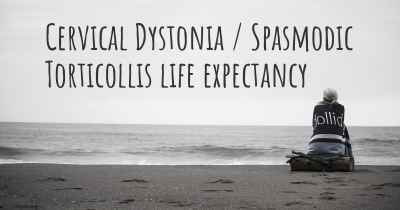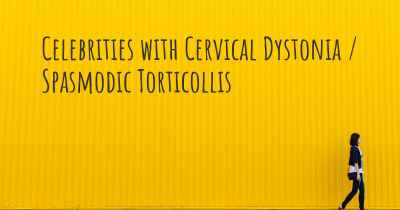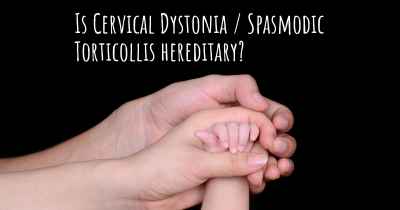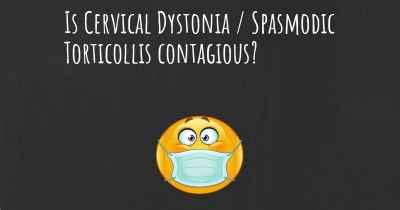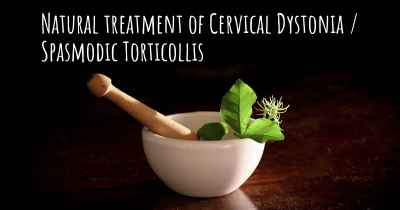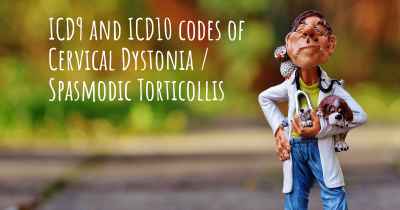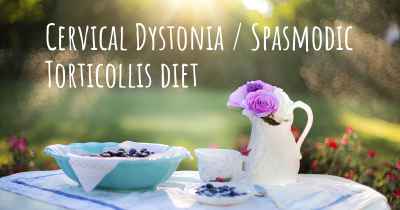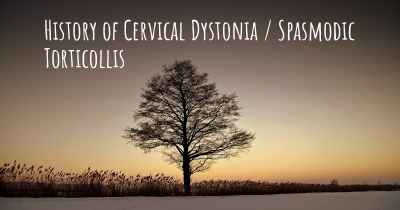Living with Cervical Dystonia / Spasmodic Torticollis. How to live with Cervical Dystonia / Spasmodic Torticollis?
Can you be happy living with Cervical Dystonia / Spasmodic Torticollis? What do you have to do to be happy with Cervical Dystonia / Spasmodic Torticollis? Living with Cervical Dystonia / Spasmodic Torticollis can be difficult, but you have to fight to try to be happy. Have a look at things that other people have done to be happy with Cervical Dystonia / Spasmodic Torticollis
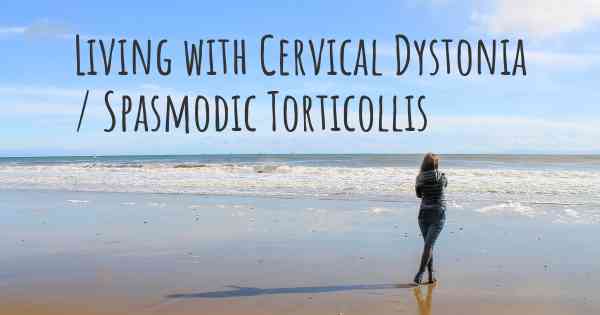
Living with Cervical Dystonia / Spasmodic Torticollis
Cervical Dystonia, also known as Spasmodic Torticollis, is a neurological movement disorder characterized by involuntary muscle contractions in the neck, causing the head to twist or turn in abnormal positions. Living with this condition can be challenging, but with proper management and support, individuals can lead fulfilling lives. Here are some strategies to help you navigate life with Cervical Dystonia:
1. Seek Medical Guidance
If you suspect you have Cervical Dystonia or have been diagnosed with it, it is crucial to consult with a healthcare professional who specializes in movement disorders. They can provide an accurate diagnosis, offer treatment options, and guide you through the management process.
2. Educate Yourself
Understanding your condition is empowering. Take the time to research and learn about Cervical Dystonia. Knowledge about the disorder, its causes, symptoms, and available treatments will help you make informed decisions and communicate effectively with your healthcare team.
3. Build a Support Network
Living with Cervical Dystonia can be emotionally and physically challenging. Surround yourself with a supportive network of family, friends, and fellow patients who understand your condition. Joining support groups or online communities can provide a safe space to share experiences, seek advice, and find encouragement.
4. Develop Coping Strategies
While there is no cure for Cervical Dystonia, there are various coping strategies that can help manage symptoms:
- Physical Therapy: Working with a physical therapist who specializes in movement disorders can help improve muscle control, reduce pain, and enhance overall mobility.
- Medications: Your healthcare provider may prescribe medications such as muscle relaxants, botulinum toxin injections, or pain relievers to alleviate symptoms. It is important to follow the prescribed treatment plan and communicate any side effects or concerns.
- Alternative Therapies: Some individuals find relief through complementary therapies like acupuncture, massage, or chiropractic care. While these approaches may not work for everyone, they are worth exploring under the guidance of a qualified practitioner.
- Stress Management: Stress can exacerbate symptoms, so finding effective stress management techniques such as meditation, deep breathing exercises, or engaging in hobbies can be beneficial.
5. Adapt Your Environment
Modifying your environment can make daily activities more manageable:
- Ergonomics: Ensure your workspace, including your desk, chair, and computer setup, is ergonomically designed to minimize strain on your neck and improve posture.
- Assistive Devices: Consider using supportive pillows, neck braces, or specialized equipment to provide additional comfort and stability.
- Home Modifications: Make necessary adjustments at home, such as installing handrails, grab bars, or ramps, to enhance accessibility and reduce the risk of falls.
6. Communicate Openly
It is important to communicate openly with your healthcare team, family, friends, and colleagues about your condition. Educate them about Cervical Dystonia, its impact on your daily life, and any specific needs or accommodations you may require. By fostering understanding and empathy, you can build a supportive network that helps you navigate challenges more effectively.
7. Prioritize Self-Care
Living with a chronic condition can be emotionally draining, so it is crucial to prioritize self-care:
- Physical Well-being: Maintain a healthy lifestyle by engaging in regular exercise, eating a balanced diet, and getting enough restful sleep.
- Mental Health: Seek professional help if you experience anxiety, depression, or other mental health concerns. Therapy or counseling can provide valuable support and coping strategies.
- Leisure Activities: Engage in activities that bring you joy and relaxation. Pursue hobbies, spend time with loved ones, or explore new interests to maintain a positive outlook on life.
Remember, living with Cervical Dystonia may present challenges, but with the right support, management strategies, and a positive mindset, you can lead a fulfilling life. Stay connected with your healthcare team, adapt your environment, and prioritize self-care to optimize your well-being.
Posted Jul 5, 2021 by TT 3100
